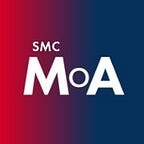Curatorial Insights
By A.T. Johnson, Fake It Till You Make It, Assistant Curator
Fake It Till You Make It: A Quest for Authenticity features a wide range of media: oil paintings, lithographs, polaroids, Non Fungible Tokens (NFTs), screenprints, hand-colored photographs — if you name it, we probably have it. Each piece is unique. There is no overarching visual aesthetic to the exhibition. Instead, the pieces are connected by their questionable authenticity.
The authenticity of an artwork and an artist is impacted by all of its surroundings, materials, and handlers — factors that are not always immediately visible. I selected three artworks that I recommend you view in Fake It Till You Make It (hopefully) to expand your perspective.
APPROACHING ART
Concepts of “authenticity” and “aura” in art are discussed by John Berger in his book Ways of Seeing. These approaches influenced the curation of this exhibit which approached each work in the permanent collection as a “case study.”
But what does that really mean?
Well, every artwork has a story on the canvas, but there is so much beyond the canvas and frame. It is expected that museums provide all of the necessary background information for understanding the origins of an artwork, but there is no set guidelines to how much trust that curators put into this information or what to even look at to question things. In relation to my three selected works, here are insights to consider while looking at the artworks.
SURROUNDINGS: The Museum as a Frame
William Keith is the cornerstone artist of the MoA. Outside of the immediate Saint Mary’s community, our museum is the go-to for his works as over 180 Keith paintings are cared for by the museum. In the Brother Cornelius Gallery, you will find three works from the collection, each with varying degrees of “attribution” to Keith.
Because of the reputation and longevity of the museum’s collection, people tend to trust that the paintings in our possession are undoubtedly Keith works. As an academic and artistic institution, museums are generally trusted to create accurate content for public consumption. Realistically, there is not always enough information for museums to properly provide completely accurate information. The authentication process is problematic because (1) it is expensive and (2) there is no structure for artist authentication. There are some works that we simply cannot definitively designate to a certain artist because of the lack of set defining factors.
Now don’t get me wrong — I am not saying to not trust the MoA. Key information can be revealed at different points in time and that not all information will ever be revealed. By continuing to inquire on the authenticity of a work through independent thought, viewers can grow by looking with a non-traditional perspective on art. Rather, I encourage that you to ask questions:
Do I trust this art because of its qualities or because of its surroundings?
How does surroundings impact viewership?
Where does the authenticity come from?
MATERIALS: Metal Man
Initially, this Sanctuary Lamp Wall sculpture had me stumped — how was the authenticity questionable? How questionable can religious objects be? Am I even allowed to question them?
I watched a documentary and interviews in an attempt to understand Victor Ries’ artistic drive and found that he had quite an impact on Bay Area art culture, religious communities, and his family. It all seemed authentic and genuine, as far as I could tell. After all of this work, I found that I was caught up questioning the wrong story; it was not Ries, the metal artist but the metal, as a medium, that had a suspicious identity.
Metal is an organic and flexible material — it can be reworked, reused, or recycled. The form of the metal has surely changed, but what makes this form as a Sanctuary Lamp Wall sculpture so special? Where do its power and aura come from? Who knew that the decision of the medium could be so impactful?
Although the material is malleable, the artist’s mission to manually imbue life into his work
HANDLERS & OWNERSHIP: Exploring the NFT World
Non Fungible Tokens or NFTs have gained attention over the years as a new form of sharing and enjoying art; NFT is a modern term however, recontextualizing the value of art is not new at all. At the end of the hallway in the John & Julia Armistead Gallery gallery is Katrienne Lemye’s “Reimagining ourselves in an ever changing world.” Viewable as a time-lapse recording, the artist’s intent and touch are evident in this piece, even with the medium being strictly digital. Lemye went through the NFT minting process and felt her value as an artist and connection to her own work disappear.
Are NFTs a new form of framing art in the art world or a new avenue of commodification?
“Four Letterpress Posters Concerning Contemporary Trends In Art” by Bay Area artists Zach Clark and Rebecca Ackermann responded to the trending NFTs and took the stance of NFTs being a new avenue for commodification. Look closely at the posters to find the symbols alluding to this stance. What do you think?
Does the transfer of ownership determine authenticity? Does commodification impact the authenticity of an artwork? Should it?
A common misconception when viewing art is that questioning the value and authenticity is disrespectful. In reality, there is no right or wrong way to think about art. The Saint Mary’s Museum of Art is a safe space to be curious and discover what art means to you. I encourage you to think about the surroundings, the materials/mediums, and the people involved with the life of the artwork. Question everything and allow yourself to enjoy the exhibits in whatever way you feel is the most fulfilling.
